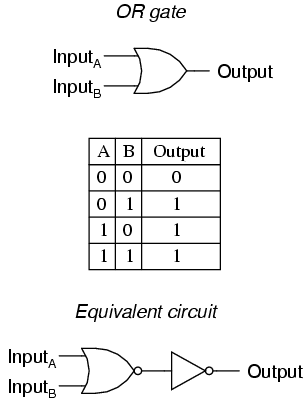Let's examine the following TTL circuit and analyze its
operation:

Transistors Q1 and Q2 are both arranged in the same
manner that we've seen for transistor Q1 in all the other TTL
circuits. Rather than functioning as amplifiers, Q1 and Q2
are both being used as two-diode "steering" networks. We may replace Q1
and Q2 with diode sets to help illustrate:

If input A is left floating (or connected to Vcc), current
will go through the base of transistor Q3, saturating it. If
input A is grounded, that current is diverted away from Q3's base
through the left steering diode of "Q1," thus forcing Q3
into cutoff. The same can be said for input B and transistor Q4:
the logic level of input B determines Q4's conduction: either
saturated or cutoff.
Notice how transistors Q3 and Q4 are paralleled at
their collector and emitter terminals. In essence, these two transistors are
acting as paralleled switches, allowing current through resistors R3
and R4 according to the logic levels of inputs A and B. If any
input is at a "high" (1) level, then at least one of the two transistors (Q3
and/or Q4) will be saturated, allowing current through resistors
R3 and R4, and turning on the final output transistor
Q5 for a "low" (0) logic level output. The only way the output of
this circuit can ever assume a "high" (1) state is if both Q3
and Q4 are cutoff, which means both inputs would have to
be grounded, or "low" (0).
This circuit's truth table, then, is equivalent to that of the NOR gate:

In order to turn this NOR gate circuit into an OR gate, we would have to
invert the output logic level with another transistor stage, just like we
did with the NAND-to-AND gate example:

The truth table and equivalent gate circuit (an inverted-output NOR gate)
are shown here:

Of course, totem-pole output stages are also possible in both NOR and OR
TTL logic circuits.
|